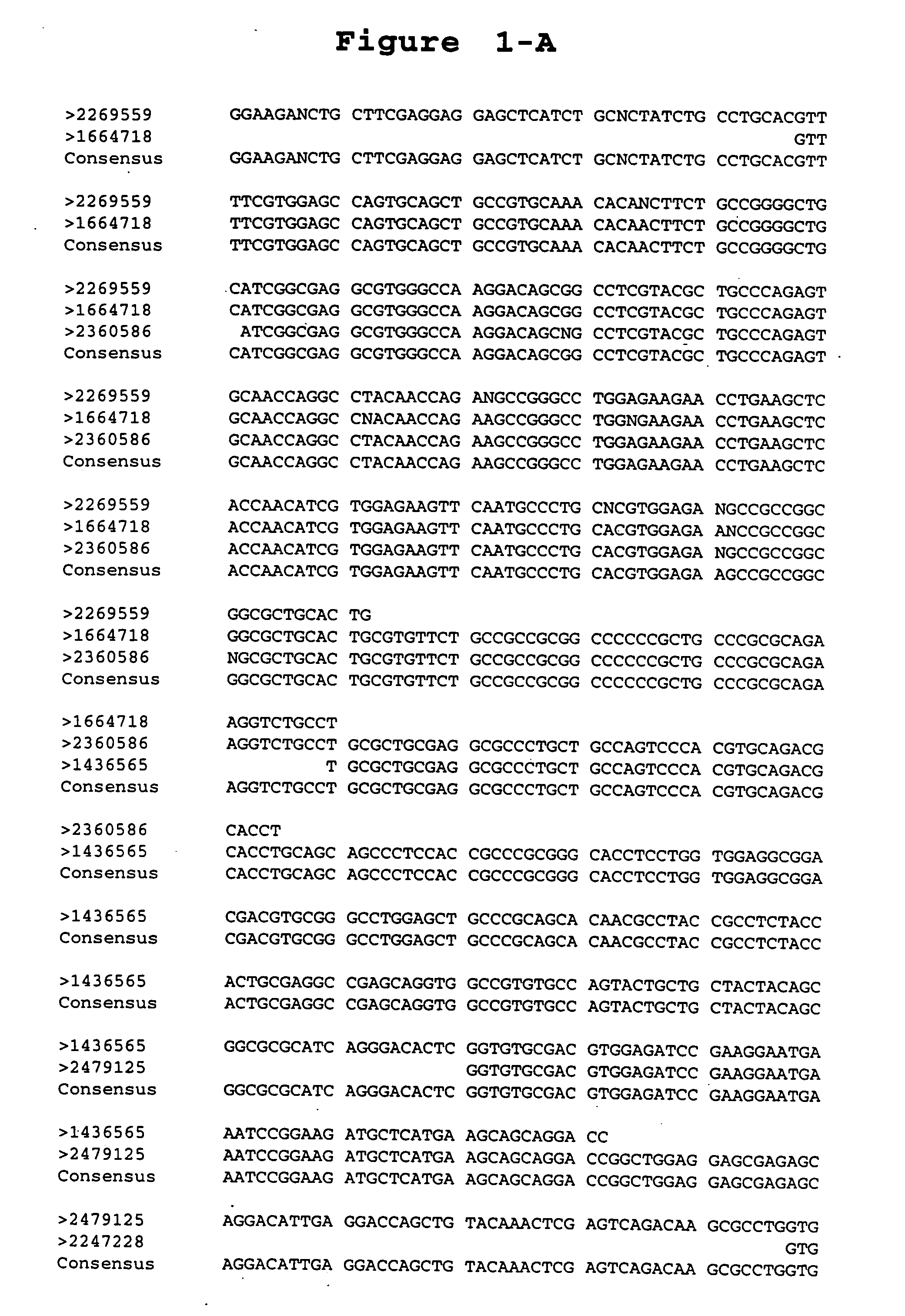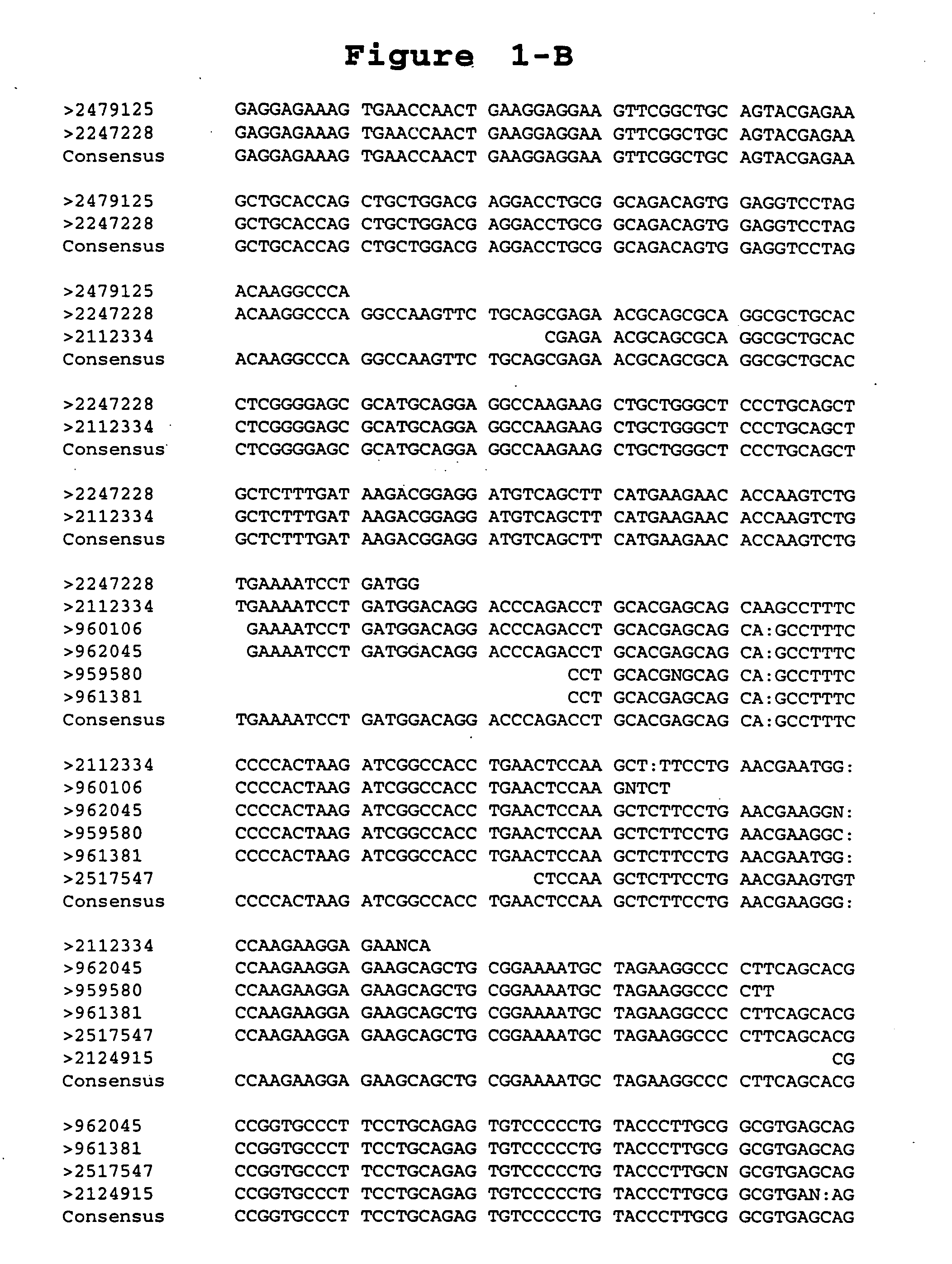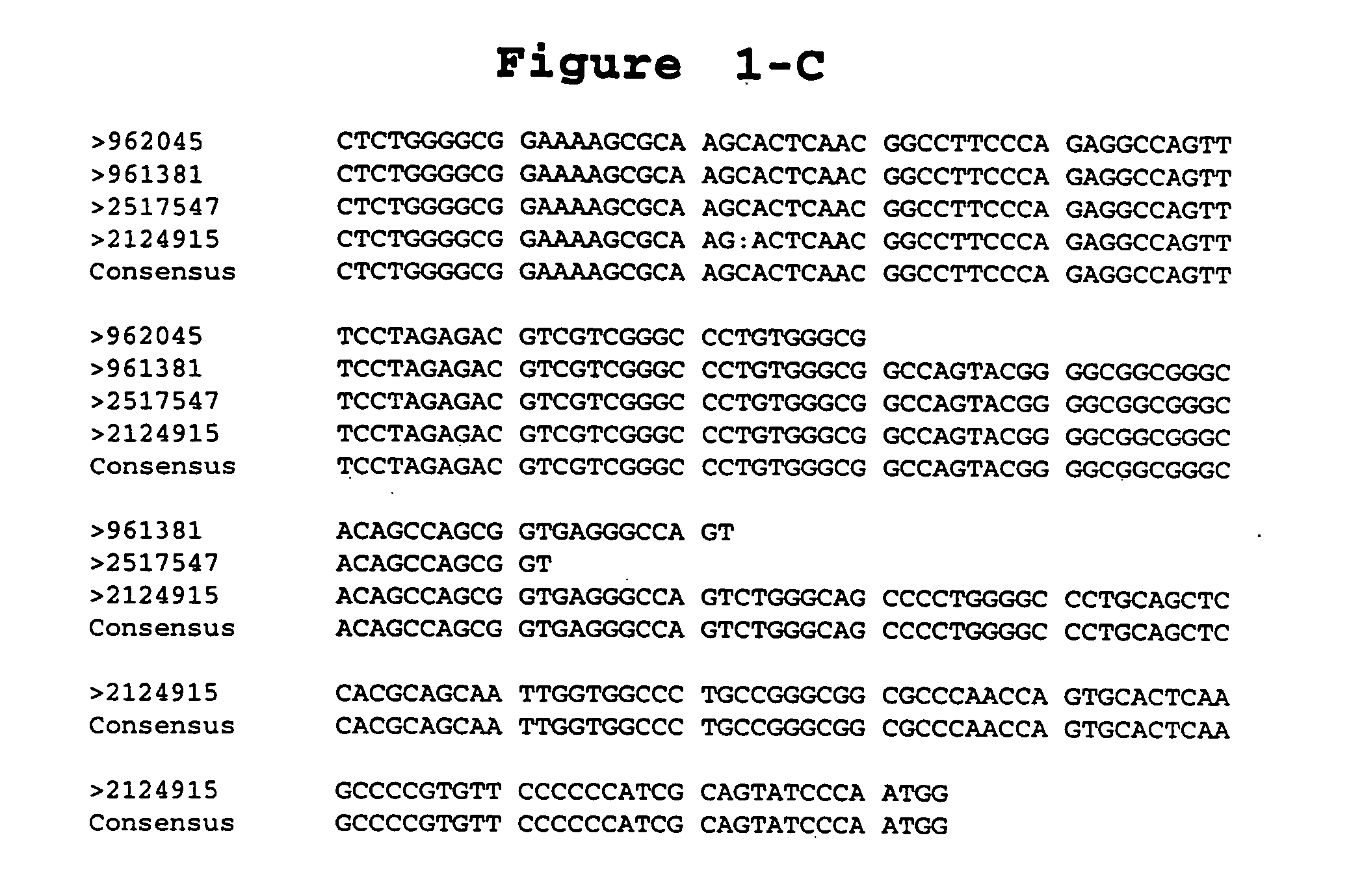Reagents and methods useful for detecting diseases of the breast
a technology of breast cancer and reagents, applied in the field of reagents, can solve the problems of false positive, failure to predict metastasis, and patient expensive and non-beneficial treatment, and achieve the effect of avoiding denaturation or irreversible adsorption of samples and maintaining specimen integrity
- Summary
- Abstract
- Description
- Claims
- Application Information
AI Technical Summary
Benefits of technology
Problems solved by technology
Method used
Image
Examples
example 1
Identification of Breast Tissue Library BS203 Gene-Specific Clones
[0186] A. Library Comparison of Expressed Sequence Tags (ESTs) or Transcript Images. Partial sequences of cDNA clone inserts, so-called “expressed sequence tags” (ESTs), were derived from cDNA libraries made from breast tumor tissues, breast non-tumor tissues and numerous other tissues, both tumor and non-tumor and entered into a database (LIFESEQ™ database, available from Incyte Pharmaceuticals, Palo Alto, Calif.) as gene transcript images. See International Publication No. WO 95 / 20681. A transcript image is a listing which provides the abundance of ESTs in a given tissue and represents the activity of genes in the tissue. The transcript images then were evaluated to identify EST sequences that were representative primarily of the breast tissue libraries. These target clones then were ranked according to their abundance (occurrence) in the target libraries and their absence from background libraries. Higher abundanc...
example 2
Sequencing of BS203 EST-Specific Clones
[0188] DNA sequences for clones which comprise the most upstream and downstream ESTs of the BS203 gene contig are determined using dideoxy termination sequencing with either dye-labeled primers, dye terminators, or radiolabeled nucleotides, following known methods. See, for example, F. Sanger et al., Proc. Natl. Acad. Sci. U.S.A. 74:5463 (1977).
[0189] Because vectors such as pSPORT1 (Life Technologies, Gaithersburg, Md.) and pINCY (available from Incyte Pharmaceuticals, Inc., Palo Alto, Calif.) contain universal priming sites just adjacent to the 3′ and 5′ ligation junctions of the inserts, the inserts are sequenced in both directions using universal primers. The sequencing reactions are run on a polyacrylamide denaturing gel and the sequences are determined by an Applied Biosystems 377 Sequencer (available from Applied Biosystems, Foster City, Calif.) or other sequencing apparatus.
example 3
Nucleic Acid Preparation
[0190] A. RNA Extraction from Tissue. Total RNA is isolated from solid breast tissues or cells and from non-breast tissues. Various methods can be utilized including but not limited to a lithium chloride / urea technique, known in the art and described by N. Kato et al., J. Virology 61:2182-2191 (1987), RNAzol™ B (available from Tel-Test, Inc., Friendswood, Tex.) and others.
[0191] B. RNA Extraction from Blood Mononuclear Cells. Mononuclear cells are isolated from blood samples from patients by centrifugation using Ficoll-Hypaque as follows. A 10 ml volume of whole blood is mixed with an equal volume of RPMI Medium (Life Technologies, Gaithersburg, Md.). This mixture is then underlayed with 10 ml of Ficoll-Hypaque (Pharmacia, Piscataway, N.J.) and centrifuged for 30 minutes at 200×g. The buffy coat containing the mononuclear cells is removed, diluted to 50 ml with Dulbecco's PBS (Life Technologies, Gaithersburg, Md.) and the mixture centrifuged for 10 minutes ...
PUM
| Property | Measurement | Unit |
|---|---|---|
| Fraction | aaaaa | aaaaa |
Abstract
Description
Claims
Application Information
 Login to View More
Login to View More - R&D
- Intellectual Property
- Life Sciences
- Materials
- Tech Scout
- Unparalleled Data Quality
- Higher Quality Content
- 60% Fewer Hallucinations
Browse by: Latest US Patents, China's latest patents, Technical Efficacy Thesaurus, Application Domain, Technology Topic, Popular Technical Reports.
© 2025 PatSnap. All rights reserved.Legal|Privacy policy|Modern Slavery Act Transparency Statement|Sitemap|About US| Contact US: help@patsnap.com



